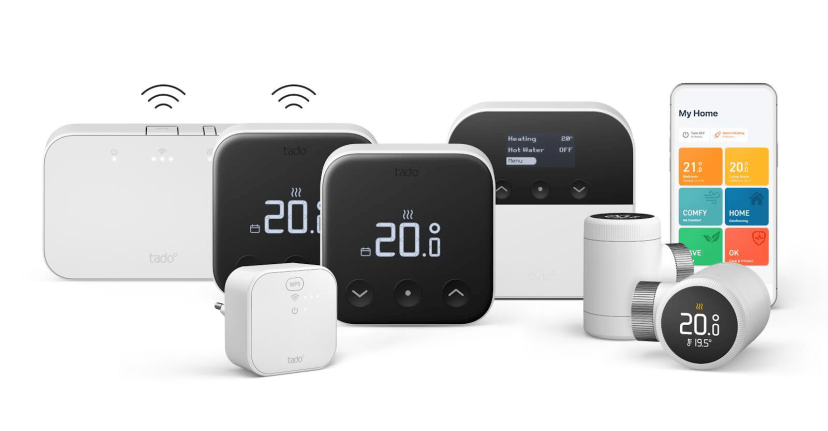Tado’s Controversial Move: The Shift to Paid App Services
Tado, the innovative smart home climate control provider, has recently stirred up discussions in the tech world with its announcement to transition to a paid app service model. This decision raises significant questions about the accessibility of smart technology, user experience, and the company’s long-term revenue strategy. As customers react to this shift, the implications for both Tado and its user base are becoming increasingly significant.
The Background of Tado and Its Services
Founded in 2011, Tado has positioned itself as a leader in smart climate control solutions. The company’s products, including smart thermostats and air conditioning controls, have been designed to optimize home heating and cooling while promoting energy efficiency. Tado’s app has long been a cornerstone of its offering, allowing users to manage their climate settings remotely, receive energy-saving tips, and track their consumption.
Up until now, Tado’s app has been free for users who purchase its hardware. This model has enabled the company to expand its user base rapidly, tapping into the growing demand for smart home solutions. However, as with many tech companies, the free model has its limitations regarding sustainability and profitability.
The Shift to Paid App Services
The announcement that Tado plans to implement a subscription-based model for its app has sent ripples through the smart home community. Starting next year, users will be required to pay a monthly fee to access certain premium features of the app, including advanced energy reports, remote access, and priority customer support. This move has sparked a mixed bag of reactions from current users and potential customers alike.
- Increased Revenue Potential: For Tado, this shift could significantly boost revenue, allowing the company to invest in further product development and customer support.
- Enhanced Features: Users may benefit from more robust features and improvements in the app, funded by subscription fees.
- User Backlash: Many users have expressed frustration, feeling that they are being forced to pay for features that were previously free.
The User Experience Dilemma
One of the most significant concerns surrounding Tado’s decision is the potential impact on user experience. The initial appeal of Tado’s products stemmed from their ease of use and accessibility. As Tado transitions to a paid model, users may feel alienated, particularly those who are accustomed to using the app without any financial commitment.
Moreover, the subscription model can create a barrier for entry for new customers. With many smart home products available on the market, potential users might opt for competitors who offer similar functionalities without ongoing costs. This could ultimately limit Tado’s market share and hinder its growth.
Comparative Analysis of Subscription Models in Tech
Tado is not alone in its shift toward subscription-based services. Many tech companies have adopted this model, citing various benefits:
- Predictable Revenue Streams: Subscription models provide companies with a steady income, allowing for better financial planning and investment.
- Continuous Improvement: With a subscription fee, companies can allocate resources to regularly update and enhance their services.
- Customer Retention: Subscription models can foster a sense of loyalty among users, as they are invested in the service long-term.
However, there’s a fine line between enhancing services and alienating customers. Companies like Adobe and Microsoft have successfully transitioned to subscription services by offering substantial value that outweighs the costs. For Tado, the key will be to ensure that the app’s premium features justify the subscription fee.
What This Means for the Future of Smart Technology
Tado’s move to paid app services could signify a broader trend in the smart technology landscape. As more companies seek to monetize their offerings, consumers may face a landscape where free services become increasingly rare. This potential shift raises several important considerations:
- Value Perception: Companies will need to clearly demonstrate the value of their services to justify subscription fees.
- Market Competition: As competition heats up in the smart home market, companies might need to rethink their pricing strategies to stay relevant.
- Consumer Education: Educating consumers on the benefits of subscription services will be crucial in gaining acceptance.
Potential Strategies for Tado
To navigate this transition successfully, Tado might consider several strategies:
- Tiered Subscription Plans: Offering different levels of service at varying price points could attract a broader range of customers.
- Free Trial Periods: Allowing users to experience premium features for free for a limited time may help mitigate backlash and encourage subscriptions.
- Feedback Loops: Engaging with users to gather feedback on the app’s features and performance can help Tado refine its offerings and address customer concerns.
Conclusion: A Balancing Act Ahead
Tado’s controversial move to paid app services is emblematic of a larger trend within the tech industry, where companies are increasingly looking to subscription models for revenue. As Tado navigates this shift, the way it manages user experience and perception will be crucial. While the potential for increased revenue and improved features exists, Tado must tread carefully to avoid alienating its loyal customer base. By demonstrating clear value and maintaining open communication with users, Tado can pave the way for a successful transition that benefits both the company and its customers.
The future of accessible smart technology may very well depend on how companies like Tado balance profitability with user satisfaction. As consumers become more savvy and discerning, the pressure will be on companies to deliver exceptional value in a competitive landscape.
See more Future Tech Daily

